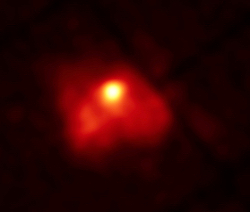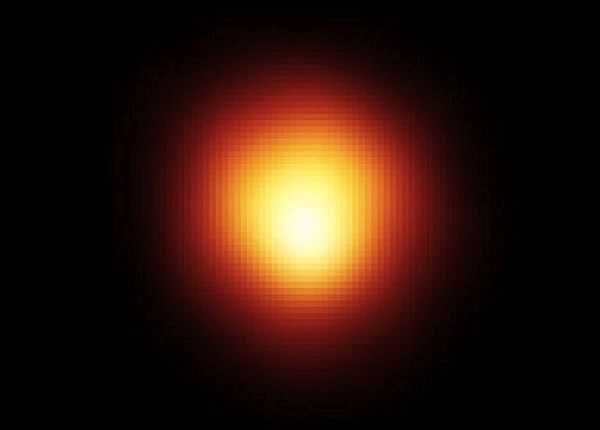 HEAPOW: Winds Behaving Badly (2018 Feb 12)
HEAPOW: Winds Behaving Badly (2018 Feb 12)
Stars that are more massive than about 10 times the mass of the Sun are extremely hot and bright; so bright, in fact, that their radiation blows substantial amounts of their atmosphere away into space. Astronomers refer to these outflows as stellar winds. These stellar winds are much more powerful than the Sun's solar wind, speeding into space at more than a million miles an hour, carrying the equivalent of the mass of earth (or more) into space every year. Often these stars are paired with another similar star possessing a similarly-strong stellar wind. In these binary systems, the stellar winds will violently collide between the stars. These collisions are so powerful that the shocked gas gets heated to temperatures of millions of degrees, producing X-ray emission. Because the shock conditions change in a predictable way as the two stars revolve in their orbits around one another, X-ray observations of these systems are useful for studying how shocks in outer space behave. A particularly interesting example of one of these "colliding-wind" systems is a binary called HD 5980, which resides in the Milky Way's neighbor, the Small Magellanic Cloud. The stars in HD 5980 are some of the most massive known: each star in the binary is more than 60 times the Sun's mass. HD 5980 is also associated with the "Valentine Nebula" visible in X-rays. HD 5980 is particularly interesting because the more massive star experienced a powerful mass eruption in the 1990's (whose origin is still uncertain). X-ray observations of HD 5980 starting in the early 2000's allowed astronomers to study the effects of the changing wind from the massive star as it declines from the eruption. Astronomers expected that the X-ray brightness would decline with the declining mass loss from the more massive star. However, observations with the XMM-Newton X-ray observatory has shown, surprisingly, that the observed X-ray brightness from HD 5980 has actually increased in the last few years, despite the decline in the strength of the stellar wind. The image above is a recent X-ray image of HD 5980 (the bright central source in the image) from 2012. Astronomers suspect that, during the earlier high mass-loss state, the colliding wind shock was unstable, and this instability suppressed the X-ray brightness in the early part of the century.
ESA: Stellar Winds Behaving Unexpectedly
A Changing Wind Collision - Yael Naze et al
- Astrophysical Journal 853(2):164 (2018 Feb 01) DOI: 10.3847/1538-4357/aaa29c
arXiv.org > astro-ph > arXiv:1712.05625 > 15 Dec 2017
| << Previous HEAPOW | High Energy Astrophysics Picture of the Week | Next HEAPOW >> |
